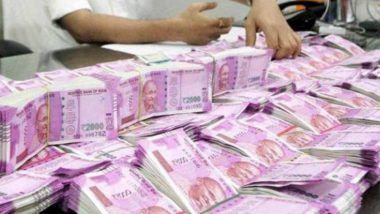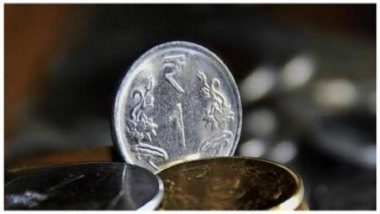Mumbai, November 4: With global crude prices remaining elevated, the rupee is likely to be under pressure, and may touch the 76 levels against the US currency over the next three months, says a report. The domestic currency has already crossed the 74 mark owing to continued strengthening of the dollar, lack of foreign flows and higher crude oil prices. The unit lost over 15 percent since the beginning of the calendar year. "Assuming global crude prices stay elevated (slightly above USD80/a barrel), we retain our bearish view on the rupee and see it plumbing to 76 over the next three months," says a weekend report by the Swiss brokerage UBS.
From April to the first week of August 2018, the RBI has been intervening in the forex markets to contain volatility, which lead to a massive drop in the forex reserves that plunged by USD 25 billion to USD 393 billion last week.
This has led to two successive repo rate hikes to the tune of 50 basis points in total. By keeping policy rates on hold in October, the RBI hinted that it will not use interest rate defence as a tool to manage currency weakness, the report said. RBI Can Sell USD 25 Billion More to Arrest Rupee Fall: SBI Report.
Between April and October, the forex reserves has come down by USD 32.78 billion, while foreign exchange reserves stood at USD 392.078 billion as on October 26. "Unlike in 2013, even as the rupee has weakened by 15 per cent calendar year-to-date against the dollar, it remains outside that group of most vulnerable currencies and the countrys forex reserves position is still reasonable," UBS analyst Gautam Chhaochharia said in the report.
He said while the country remains vulnerable in its external position, there is no need to press the panic button for NRI bond issuances, to stabilise the rupee, yet unless it becomes a political issue in the run-up to the 2019 general elections. "However, in case external stress continues to rise from here (Brent continue to rise towards USD 100/a barrel and/or the rupee weakens towards the 80 levels, the option of raising dollar deposits (USD 30-35 billion) could be explored to stabilise the rupee," Chhaochharia said. The report said the loose monetary and fiscal policy pursued by the policymakers five years ago led to exacerbated macroeconomic imbalances when the US Fed announced the start of tapering.
This caused the rupee to be amongst the "fragile five" currencies.
It believes that the macro fundamentals compare favourably with those in 2013 as policy buffers have been created. "The inflationary pressures are manageable thanks to lower food prices, and the government remains committed to fiscal discipline although the deficit targets are quite stretched, and even as we expect the CAD to widen to 2.7 per cent of GDP in FY19, it is well below the 4.8 per cent peak registered in FY13," the report said, adding the RBI's policy tilt is no longer accommodative.
The report further says the current liquidity shortage triggered bydefault by IL&FS and group companies on their debt obligation is a liquidity squeeze and not systematic risk. "We expect the RBI to neutralise the liquidity squeeze but think that an `easy money' period is not coming back in a hurry," it added.













 Quickly
Quickly




















